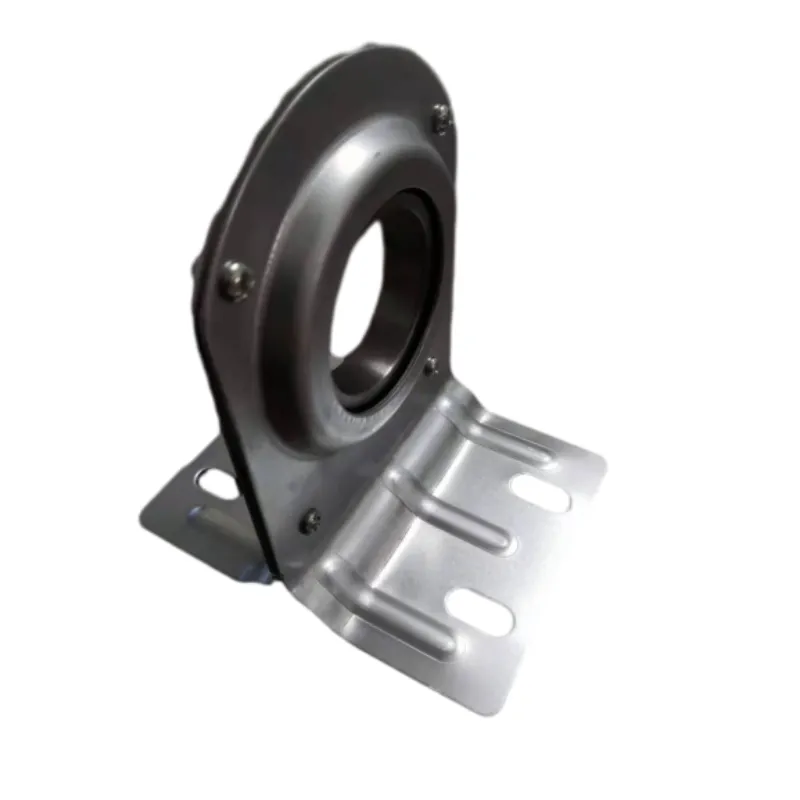
Nov . 10, 2024 05:00 Back to list
Single Direction Thrust Ball Bearings for Optimized Performance and Reliability
Thrust Ball Bearings Single Direction Applications
Thrust ball bearings are a crucial component in many mechanical systems, designed to handle axial loads with a specific orientation. Unlike other types of bearings, thrust ball bearings are uniquely capable of supporting axial loads in one direction. This specialized design makes them indispensable in various applications where axial positioning is essential.
Structure and Components
A thrust ball bearing typically consists of three main components the raceway, the balls, and the cage. The raceway is a circular groove that houses the balls, allowing them to roll smoothly while bearing the load. The balls, made of high-strength steel or ceramic materials, are the primary load-bearing elements. The cage, often referred to as a retainer, holds the balls in position and ensures that they remain evenly spaced.
In single-direction thrust ball bearings, the design is optimized to handle loads acting in one direction only. This is achieved by incorporating a pair of raceways one fixed and one that can rotate, accommodating the axial force from only one side. The ability to manage axial loads effectively while maintaining low friction makes thrust ball bearings ideal for numerous applications.
Applications
Single-direction thrust ball bearings are commonly found in various industrial and automotive applications. In the automotive sector, they are often used in gearboxes, where they help manage the axial loads produced by gears during operation. These bearings ensure smooth gear transitions and prevent misalignment, which can lead to early wear and failure of components.
Another prevalent application is in electric motors and generators. Thrust ball bearings help maintain the rotor's axial position, ensuring efficient operation and longevity. By supporting the rotor, these bearings minimize vibrations, thereby enhancing performance and reducing noise levels.
Industrial conveyors and lifting equipment also benefit from the use of single-direction thrust ball bearings
. They play a key role in mechanisms that require precise axial positioning, ensuring that loads are moved smoothly and efficiently.thrust ball bearings single direction

Advantages of Single-Direction Thrust Ball Bearings
One of the primary advantages of single-direction thrust ball bearings is their simplicity and effective design for handling specific loads. Because they only support axial loads in one direction, they are often more compact and lighter than other bearing designs that manage bidirectional loads. This offers a significant advantage in applications where space and weight are critical considerations.
Furthermore, single-direction thrust ball bearings require minimal maintenance, thanks to their robust construction and lubrication characteristics. With proper lubrication, they can achieve extended service life, thus reducing downtime and maintenance costs for manufacturers.
Considerations When Choosing Thrust Ball Bearings
When selecting thrust ball bearings for a specific application, several factors should be considered, including load capacity, operating speed, and environmental conditions. It's essential to choose a bearing that can handle the expected loads without exceeding its capacity, as overload can lead to premature failure.
The operating temperature is another critical factor. High temperatures can negatively affect the lubrication and material properties of the bearings. Therefore, selecting bearings designed for high-temperature applications may be necessary for certain environments.
Conclusion
In summary, single-direction thrust ball bearings are essential components in various mechanical systems, offering efficient axial load support in a compact and lightweight design. With their wide range of applications—from automotive to industrial machinery—they play a pivotal role in ensuring the smooth operation of many systems. Through thoughtful selection and proper maintenance, these bearings can significantly enhance performance, reliability, and longevity in countless applications.
Latest news
-
Premium Deep Groove Ball Bearings | High Speed & Reliability
NewsAug.29,2025
-
Durable Scaffolding Clamps - Secure & Reliable Tube Connectors
NewsAug.28,2025
-
Common Failures in Thrust Ball Bearings and Solutions
NewsAug.22,2025
-
How Tapered Roller Bearings Can Take Shock Loads
NewsAug.22,2025
-
Angular Bearings in High-Precision Spindles
NewsAug.22,2025
-
The Impact of Misalignment on Cylindrical Roller Bearing Performance
NewsAug.22,2025
